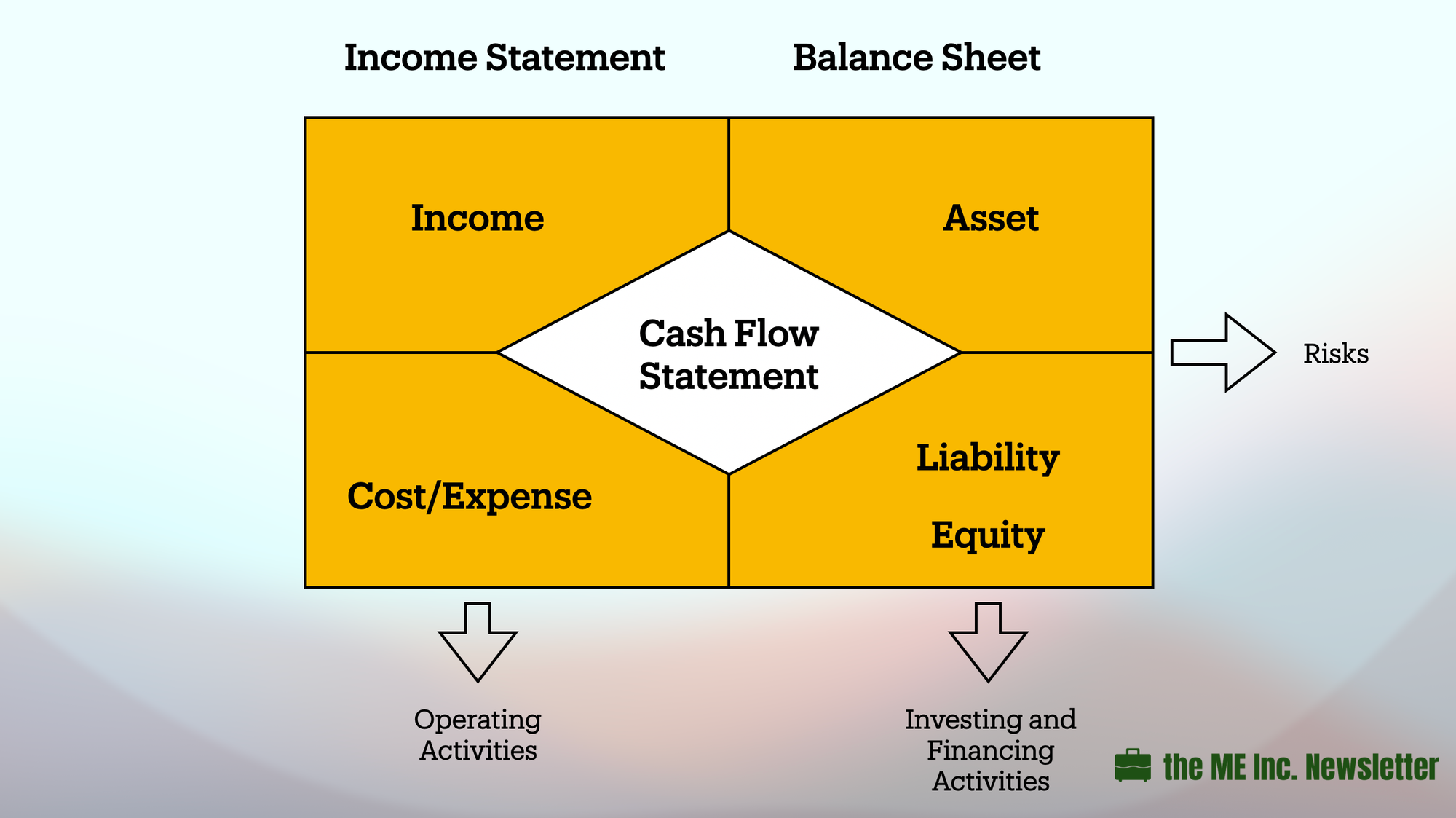How are Financial Statements Linked Together?
Why do we need all three financial statements, i.e. balance sheet, income statement, and cash flow statement?

Now that we've gained a comprehensive understanding of the three financial statements, we are ready to answer the question initially raised at the beginning of our studying:
Why does every country require companies to prepare these exact financial statements, i.e. balance sheet, income statement, and cash flow statement?
We say that all financial reports are for descriptions of economic activities of companies. If the three financial statements could describe all economic activities accurately, then we can understand the necessity of making them.
In our previous example, there were 13 economic activities in the first year after the establishment of the company. There are financing activities covering both debt financing and equity financing. There are investing activities where the company invested in fixed asset procurement. There are also operating activities where the company conducted a variety of activities such as manufacturing, R&D, sales, and management, etc. So we can say that although there are merely 13 economic activities, it actually reveals the true condition of a company.
Now let's look at the cash flow statement from another perspective. Among the 13 economic activities, which ones appeared on the income statement?
It is the seventh - sales - when the company began to sell its products. All activities happened before that from raising money, construction of manufacturing facilities, procurement of raw materials, and manufacturing, etc., are not reflected on the income statement. There are some other activities after sales that appeared on the income statement such as R&D and income tax.
We can see that most items listed on income statement are only related to operating activities. In fact, most of the income statement are for the description of operating activities: other than financial expenses, investment income and non-operating revenue, every other item on the income statement describes some sort of operating activities.
Of course, the receivables and payables in operating activities are also listed on the balance sheet. However, it is clear that besides these items, there are many other items like fixed assets, intangible assets, long term investment, long-term and short-term loans, and shareholders equity, etc., on the balance sheet.
Obviously, they are not related to operating activities; they are only related to investing and financing activities.
So we say that although balance sheet describes operating activities to a certain extent, most of it are about investing and financing activities.
So we can see if we want a clear description of all the three activities, we should put together balance sheet and income statement. The former helps describe the status of our investing and financing activities, while the latter helps describe the status of our operating activities.
But there is one statement left - cash flow statement.
On this statement we can not only find the cash flow of operating activities, but also those of investing and financing activities.
Why do we still need a cash flow statement, considering that all economic activities can be found from the previous two statements?
Cash flow statement provides us with a different perspective, a unique perspective totally different from that of balance sheet and income statement. As we have mentioned previously, the reason for us to care about cash flow is because we are concerned about the survival of the company. It is from the perspective of risk that a company is facing. By looking at the combination of balance sheet, income statement, and cash flow statement of a company, we can clearly get a general picture of a company's financial health, especially its likelihood of survival, and when it can pass the survival line, what its financial outcome might be in the future.





